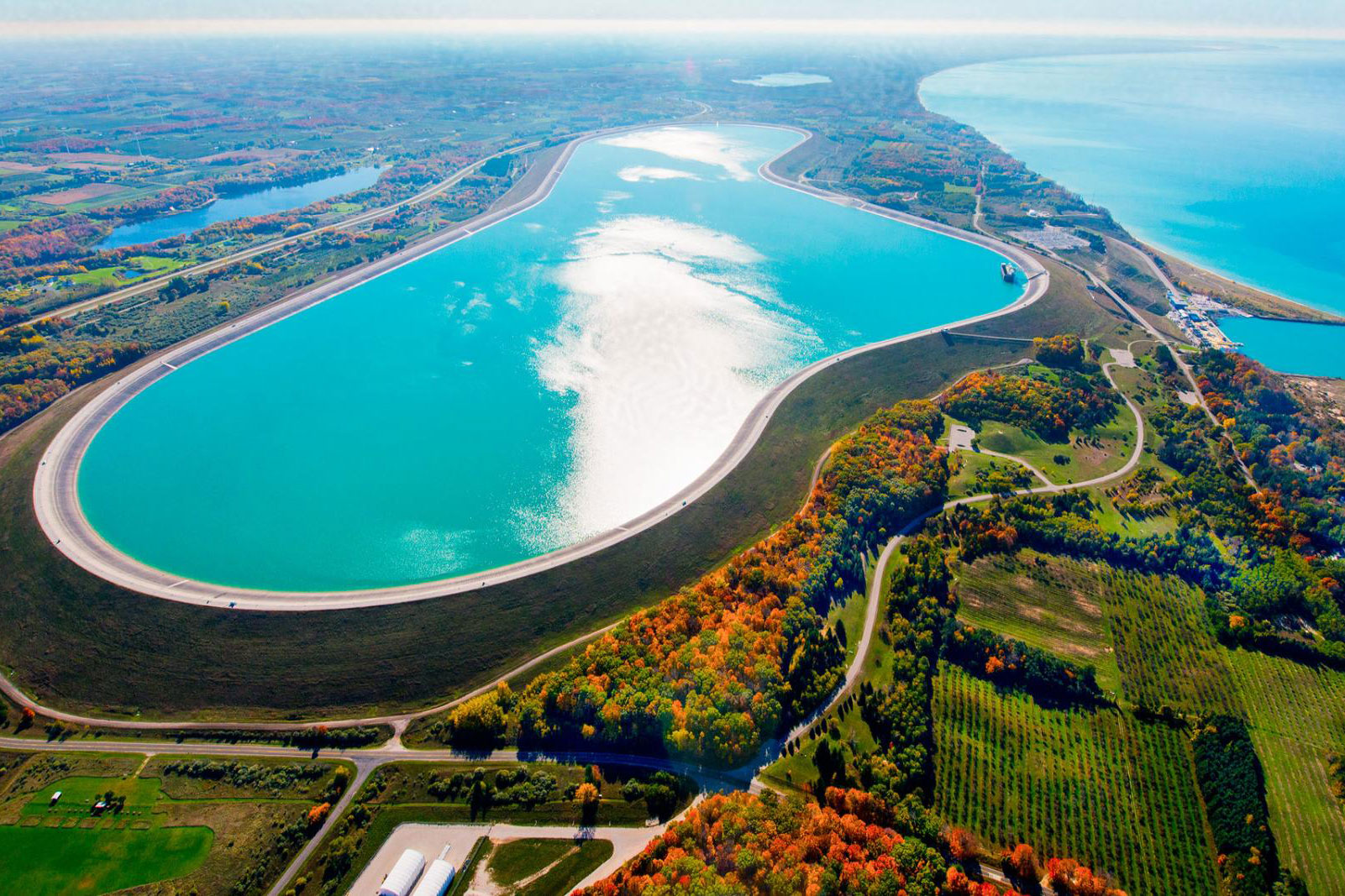Assessment of Pumped Hydro Energy Storage potential throughout the Great Lakes
Assessment of Pumped Hydro Energy Storage potential throughout the Great Lakes
Assessment of Pumped Hydro Energy Storage potential throughout the Great Lakes
Program: Carbon Neutrality Acceleration Program
Program details » | All Carbon Neutrality Acceleration Program projects »

Image © Dale Fisher
Project team
- Jeremy Bricker, Civil and Environmental Engineering (PI)
- Andrew Gronewold, School for Environment and Sustainability
- Jon Allan, School for Environment and Sustainability
- Tomas Höök, Purdue University
- Marc Gaden, School for Environment and Sustainability
Project Summary
Wind and solar energy both generate power intermittently. To allow these renewables to proliferate while maintaining grid stability, significant energy storage must be developed. The National Renewable Energy Laboratory estimates that the U.S. will need 120 GW of installed power capacity storage in order for renewables to dominate domestic electricity production. As of 2022, the U.S. has only 24 GW of utility-scale storage capacity installed, with 22 GW of that supplied by pumped hydro storage (PHS).
PHS is the dominant mode of energy storage domestically and globally thanks to its high efficiencies, large achievable capacities, long lifetimes, low unit costs, and low lifetime carbon emissions. The Great Lakes region has suitable topography for on- and offshore PHS, and its first large-scale PHS development was built in the 1960s for daily power peaking. That development, which is still in use, has incurred public backlash for its negative impact on fisheries and land use.
This project team will collaborate with stakeholders to seek a pathway for acceptance of next-generation PHS in the Great Lakes as an effective emissions-reduction tool. The team will also assess the technical, economic, social, and environmental feasibility of PHS, conducting the first U.S. assessment of its kind and the only assessment to address pressing Great Lakes issues, such as shoreline erosion.
Upscaling next-generation, low-impact PHS throughout the Great Lakes could provide clean energy security and job opportunities. Installations near economically disadvantaged cities could generate jobs without introducing negative health impacts. Large-scale PHS could be co-located with wind power generation, which would allow efficient centralization of power transforming, switching, and transmission. Overall, PHS distributed throughout the Great Lakes could have significant economic and environmental benefits, uniting disparate stakeholders toward the shared aims of reducing carbon emissions and stemming global warming.